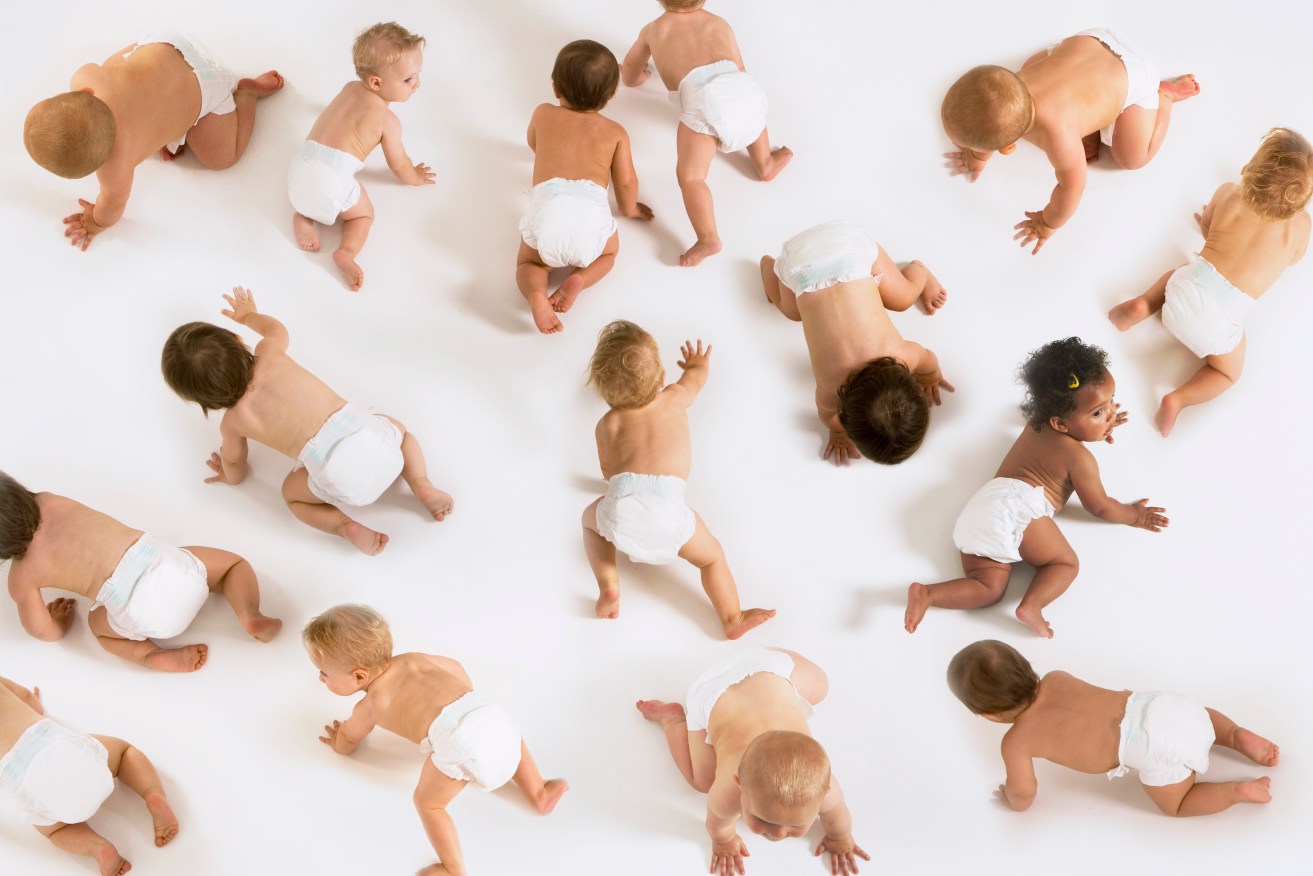Infertility: How fewer babies might mean the end of the world


Babies might become more precious than ever – too few of them could tip us into extinction. Photo: Getty
What happened to our cousins, the Neanderthals? These were people who mourned their dead with flowers and trinkets, just like us.
They had babies with us. They may have learnt some of our language. Then, 40,000 years ago, they winked out as a species.
Climate change (an ice age) might have been to blame; it probably didn’t help. A devastating illness is another theory – think of a coronavirus at a time of no medicines or frequent hand washing.
Violence from competing humans – us – was another likely scenario. However, while there would have been without doubt violent clashes, there is new evidence that we didn’t cause a brutal wipeout.
Making love, not war might have done it
A 2022 paper from the British Natural History Museum found evidence that widespread interbreeding with Homo sapiens would have reduced the number of Neanderthals breeding with each other.
As the numbers dropped, and groups of Neanderthals became more fragmented, and probably inbred, extinction was inevitable. In other words, we sort of swallowed up Neanderthal genetic diversity.
Why didn’t Homo sapiens suffer a similar fate from interbreeding? Probably because they lived in bigger groups, and were better organised.
Researchers from the Aix Marseille Université, France, in a 2019 study, came to a similar conclusion using demographic modelling. Learn more here.

Neanderthals may have interbred with homo sapiens and failed to breed sufficiently among themselves. This led them to fall apart as a species. Photo: Getty
The researchers suggest that a slight (about four per cent) “but continuous decrease in the fertility rate of younger Neanderthal women could have had a significant impact on these dynamics, and could have precipitated their demise”.
Bottom line: Once babies stop being made in sufficient numbers, and the world becomes more challenging via a hostile climate, a species will eventually go down the gurgler.
With a whimper, and not the sexy kind
Modern humans may be going the same way as the Neanderthals.
We have climate change that is causing water to dry up, threatens agriculture, and will likely lead to panicked mass migrations of people looking for a friendlier place to live.
With the war in Ukraine, the superpowers suffering itchy trigger fingers, the probability of a nuclear war, set off by some kind of accident, is probably the highest it has ever been.
And while many of us (humans) might be vaporised in a nuclear attack, or starve to death in a barren landscape, we have a baby problem.
We’re having fewer of them.
So for all the big bang possibilities, and a similar attendant fragmentation that knocked off the Neanderthals, human extinction might eventually be a slow drip loss of fertility.
Where we’re at baby-wise

As this graph illustrates, in 1950 the average household worldwide had five children. Today it’s less than half that at 2.4. There’s nothing to suggest this decline will arrest itself.
In June last year, the World Economic Forum reported that:
- Over the past 70 years, fertility rates have declined by 50 per cent worldwide
- Reasons include women’s empowerment in education and the workforce, lower child mortality and the increased cost of raising children
- Lower fertility rates, coupled with increased life expectancies around the world, are creating an ageing population, which puts pressure on healthcare systems globally.
In fact, birth rates worldwide are hitting record low levels.
According to a BBC report, more than 50 per cent of the world’s population live in countries with a fertility rate below two children per woman – resulting in populations that without migration will gradually contract.
Meanwhile, one in six people are infertile
About three weeks ago, the World Health Organisation (WHO) published a report that found “one in six people around the world experience infertility”.
This finding came from analysis of infertility data from 1990 through 2021.
Interestingly, there also appears “to be little difference in rates across high-, middle- and low-income countries”.
The proportion of adults affected by infertility during their lives is 17.8 per cent in high-income countries and 16.5 per cent in low- and middle-income ones.
WHO defined infertility as “a disease of the male or female reproductive system, defined by the failure to achieve a pregnancy after 12 months or more of regular unprotected sexual intercourse”.
WHO is calling for “better access to fertility care across all nations”.
But most nations can’t afford to fund ovulation or surgical procedures can be used to help women specifically. And they certainly can’t afford assisted reproduction technologies such as IVF or intrauterine insemination.
The analysis didn’t look at whether global infertility rates have been increasing or decreasing over time.
Get a wriggle on, please
Given that the rate of infertility was pretty constant across rich and poor nations, it’s possible that the one in six number is nature’s failure rate.
Maybe.
But Houston, we have a problem – an increasing number of men, notably in the west, are failing to launch quality sperm.
The widely reported ‘sperm crisis’ is a contested area of research – in May 2021, some researchers argued that the crisis is, ahem, overblown.
A month later, a Conversation article cited multiple studies that found the sperm counts in men, worldwide, have declined by more than half since the 1930s.
The author, Ryan P. Smith, associate professor of urology at University of Virginia, writes:
“In 1992, a study found a global 50 per cent decline in sperm counts in men over the previous 60 years.

Evidence suggests sperm counts have been falling globally since the 1930s. Photo: Getty
“Multiple studies over subsequent years confirmed that initial finding, including a 2017 paper showing a 50 per cent to 60 per cent decline in sperm concentration between 1973 and 2011 in men from around the world.”
He then cited more recent studies that looked at sperm quality. It, too, was in decline. He argued that toxic pollution was probably to blame.
Really? The end of the world?
Henry Gee is a paleontologist, evolutionary biologist and editor at Nature.
In 2021, he published a cheerfully gloomy piece in Scientific American about mankind’s sort-of-imminent demise, prompted by the world’s faltering population dynamics and environmental decay.
He makes an interesting point – that our rapid success as a species comes at a cost. We’ve had our population boom. Next comes the bust. He writes:
“As a paleontologist, I take the long view. Mammal species tend to come and go rather rapidly, appearing, flourishing and disappearing in a million years or so.
“The fossil record indicates that Homo sapiens has been around for 315,000 years or so, but for most of that time, the species was rare – so rare, in fact, that it came close to extinction, perhaps more than once.”
“Thus were sown the seeds of humanity’s doom – the current population has grown, very rapidly, from something much smaller. The result is that, as a species, Homo sapiens is extraordinarily samey. There is more genetic variation in a few troupes of wild chimpanzees than in the entire human population. Lack of genetic variation is never good for species survival.”
So how long have we got?
Dr Gee says the signs are already there for those willing to see them.
“When the habitat becomes degraded such that there are fewer resources to go around; when fertility starts to decline; when the birth rate sinks below the death rate; and when genetic resources are limited – the only way is down. The question is ‘How fast?'”
He suspects that the human population is set “not just for shrinkage but collapse – and soon”.
Scary? Well, get out there and start making babies. And fast.








